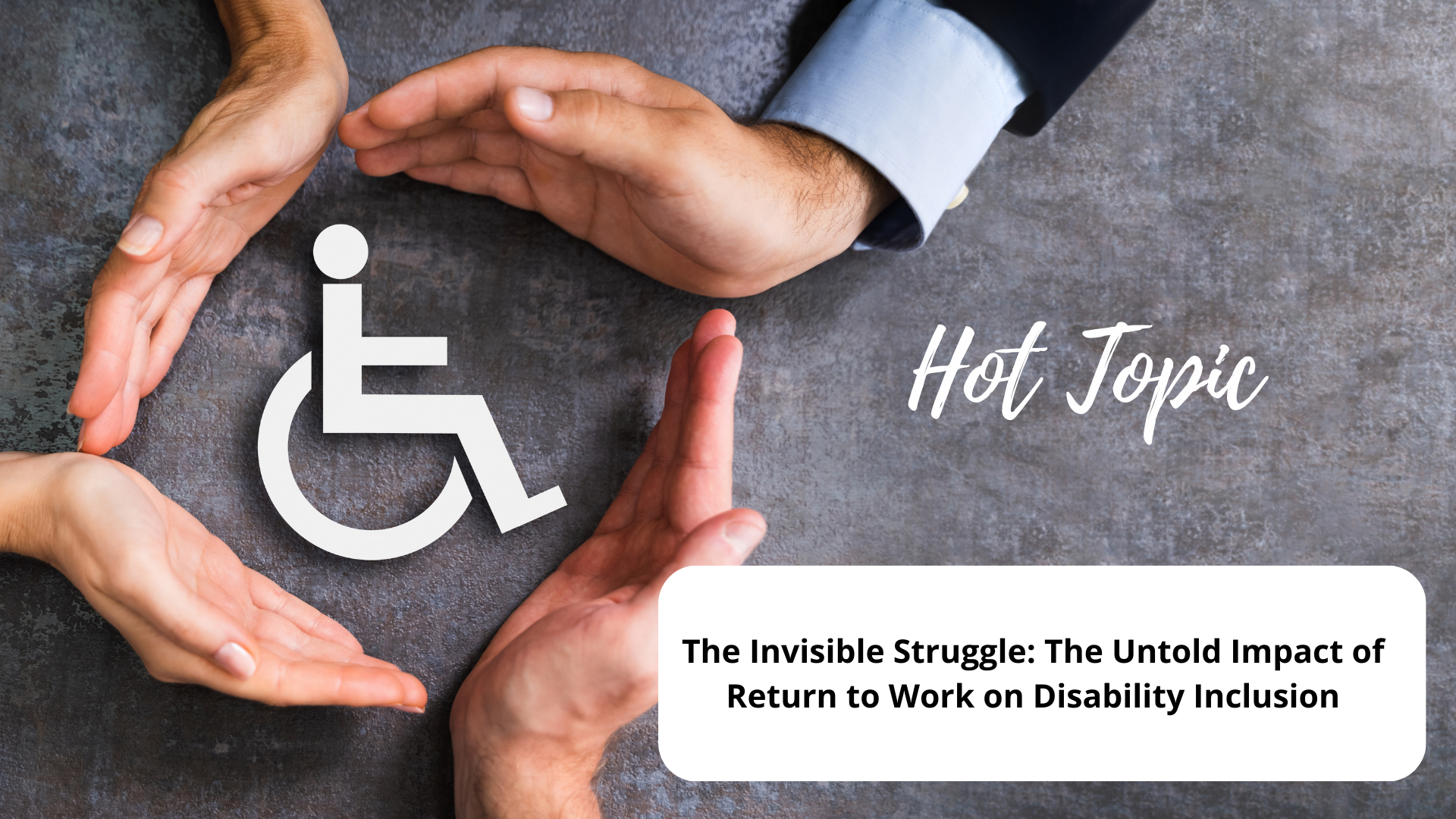Understanding the Impact of Return-to-Work on Disabled Employees
The shift to return-to-work mandates significantly affects disabled employees, a group witnessing a notable surge in workforce participation. The U.S. Bureau of Labor Statistics reports that the labor force participation rate for individuals with disabilities (ages 16-64) reached a historic high of 40.2% in early 2023, a jump from 36.6% in the previous year. The employment-population ratio for persons with a disability also increased to 21.3% in 2022, up from 19% in 2021 (U.S. Bureau of Labor Statistics, 2023).
This increase highlights the diverse range of disabilities within the workforce, from visible physical impairments to less apparent conditions like chronic illnesses and mental health issues. The return to office-centric work models, however, risks eroding the accessibility gains made during the pandemic. Disabled employees, who benefited from the flexibility of remote work, now face challenges such as inaccessible workspaces and increased stress in less adaptable environments. Employers must therefore develop inclusive policies that actively cater to each employee’s unique needs, not just comply with legal standards. Failure to do so risks a less inclusive workplace, affecting morale, productivity, and potentially increasing turnover rates.
How Return-to-Work Mandates Impact Employees
- Physical Disabilities: The return to physical office spaces can pose significant challenges for those with physical disabilities, such as navigating non-accessible environments and managing commutes.
- Invisible Disabilities: Those with invisible disabilities may find the transition from a home to an office environment exacerbates stress, anxiety, and other symptoms.
- Caregivers: Employees who are caregivers for disabled family members may struggle with balancing office hours and caregiving responsibilities.
- General Workforce: All employees may face challenges adjusting to new dynamics and understanding diverse needs in the workplace.
- Mental Health Impact: The collective anxiety about returning to the office can affect mental health, necessitating adequate support and resources from organizations.
Disabled Employee Expectations in the Return-to-Work Transition
- Clear Communication: Disabled employees expect transparent communication about return-to-work policies, particularly regarding accommodations.
- Inclusivity in Decision-Making: They seek to be involved in decisions affecting their work conditions, ensuring their unique perspectives are considered.
- Flexible Work Options: Many expect continued flexibility in work arrangements, tailored to individual needs.
- Accessible Environments: There is an expectation for physical and digital workspaces to be fully accessible.
- Supportive Culture: A workplace culture that is supportive and empathetic towards individuals with disabilities is crucial.
Navigating New Challenges: The Corporate Conundrum in Return-to-Work Policies
- Redefining Accessibility: Companies must reevaluate and enhance their work environments to meet the needs of disabled employees, going beyond basic legal compliance.
- Productivity and Well-being: The well-being and productivity of disabled employees may be at risk with the shift back to office work.
- Role of Human Resources: HR departments are pivotal in updating policies and fostering a culture of empathy and understanding.
- Employee Retention and Talent Attraction: How companies handle this transition can impact their ability to retain and attract talent.
- Legal and Compliance Risks: Businesses must diligently navigate legal and compliance aspects to avoid potential legal issues.
The return-to-work mandates present a complex scenario for businesses, demanding a balanced approach that encompasses legal compliance and a genuine commitment to inclusivity. The transition period is a critical test of a company’s adaptability and empathy, especially towards disabled employees. Organizations must ensure that this transition does not hinder the progress made in creating an inclusive and accessible work environment.
However, the shift back to traditional, office-centric work models poses a risk of reversing the accessibility advancements achieved during the pandemic. Many disabled employees, who found remote work more accommodating due to its flexibility, are now confronted with potential barriers. These include physical inaccessibility of office spaces and increased mental stress in less adaptable environments.
This predicament emphasizes the urgent necessity for employers to formulate inclusive workplace policies. These policies should not only comply with legal requirements but also proactively address the distinct needs of every employee. Neglecting to implement such inclusive strategies could lead to a less diverse and accommodating workplace, adversely affecting employee morale and productivity, and potentially resulting in higher turnover rates.
The recent trends in employment among disabled individuals highlight the significant impact of return-to-work policies. It is imperative for organizations to recognize the unique contributions and requirements of this growing segment of the workforce, ensuring that the transition back to office work does not impede the progress made in fostering an inclusive and accessible work environment.








